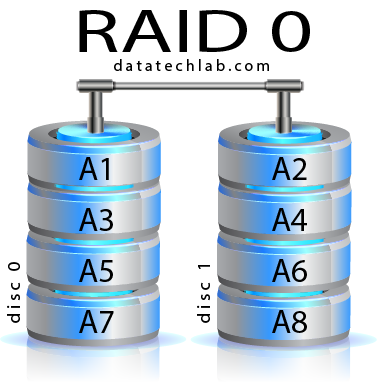DataTech Labs® provides fast, professional RAID 0 data recovery services. Our expert recovery engineers will work around the clock to ensure that your critical data is retrieved as quickly as possible. We understand that each customer’s situation is unique, so we will analyze each hard drive in your RAID 0 array to determine the best recovery method for each of our clients.
A RAID 0 requires a minimum of two hard disks. Data is striped between the disks in increments of either 64 or 128 KB (normally). This configuration offers no protection against data loss, since there is no parity information for redundancy. The RAID 0 setup does, however, offer increased performance. Because of multiple drives reading a single file at the same time, read performance from the array is higher. There is less of a difference on write time, and performance ratio decreases as the number of drives in the array increases.



